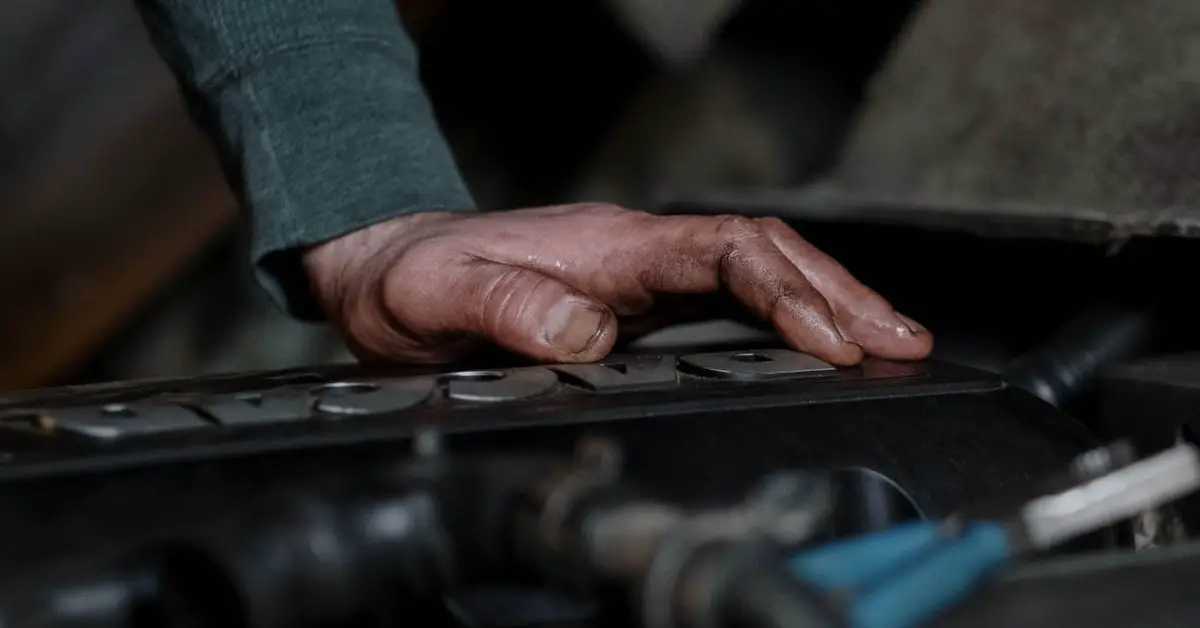Most car manufacturers recommend cleaning the throttle body after every 30,000 kilometers. This is because the excess carbon residues and dirt that settle on the throttle body during combustion can cause your vehicle to stall, run rough or become unstable when idling. Therefore is it possible to spray throttle body cleaner while the car is running?
It is possible to spray throttle body cleaner while the car is running. However, this could cause most of the throttle cleaning solution to end up in the combustion chamber. Gaskets and oil seals are particularly vulnerable to this chemical and could be damaged as a result; hence, cleaning the throttle body with the engine off is safer.
In this article, you will learn about why you need to clean the throttle body and what happens when you don’t clean it periodically. You’ll also discover how often you should clean your car throttle and how to tell if your throttle body needs to be cleaned.
What Happens If You Don’t Clean Your Throttle Body?

When the throttle body becomes dirty, it directly impacts the engine’s smoothness. The vehicle may encounter jumpy or sluggish acceleration, rough idling, poor fuel economy, and stalling.
The amount of fuel injected into the combustion chamber is determined by the amount of air drawn from the throttle body by the engine control unit. If the throttle body is dusty or obstructed, it can limit the quantity of air required for proper operation, resulting in the engine stalling.
The Idle control sensor on the throttle body that pulls a specified quantity of air into the engine at idle to guarantee smooth operation. This sensor will not operate correctly if the throttle body is clogged or obstructed with dirt, and the automobile will not be steady on the idle. Also, misfires can occur due to a poor air and fuel combination when the throttle body is defective or dirty, resulting in rough running.
The dirt and debris buildup is easily removed with a throttle body cleaning product.
The process involves several steps to get to where You can apply the powerful spray safely. If your vehicle’s engine is running rough, you may want to check the throttle body for gunk and grime.
How Often Should You Clean Your Throttle Body?
To help prevent problems caused by a dirty throttle body, frequent cleaning of the part can enhance the operation of the vehicle at a higher level of performance. Usually, a throttle body would become very dirty after your vehicles run about 6000 to 8000 miles, especially if you frequently drive in stop-and-go city traffic or when oil changes are not performed regularly. However, there are no mileage requirements, and some automobiles may never require this service.
Some manufacturers require a precise procedure to clean the throttle body. If not done properly, the throttle body might get damaged, and it’s an expensive vehicle part to replace. Therefore, it is advisable to consult the manufacturer’s service manual or have this service done by a qualified technician if that’s the case.
Can I Use Wd-40 to Clean My Throttle Body?
You can keep the throttle body and carburetor clean using WD-40 Specialist Cleaner. WD-40 throttle body cleaner Is a degreaser that only requires you to spray the solution inside the throttle body on the walls and wipe it with a rag. It is aerosolized and applicable to almost all carburetors and uses a solvent formula that breaks hard carbon impurities.
Signs That Could Mean Your Throttle Body Needs Cleaning

One of the telltale symptoms is that your throttle body isn’t working as well as it exhibits poor or low idle. This can include stalling after coming to a complete stop, a low idle after starting, or stalling when the throttle is suddenly squeezed down. Dirt produces turbulent airflow into the system, resulting in a variable idle speed.
As you might assume, the collection of dirt and grime within the throttle body, also known as coking, is one of the significant reasons it has to be cleaned. This generates a rough surface, disrupting air-fuel flow and lowering your engine’s efficiency. Carbon deposits create an uneven surface inside the component, which causes a similar issue.
Examine your fuel economy by putting a full tank of gas in your car and keep track of the miles on your odometer. Calculate your average miles per gallon by driving the car until it runs out of gas. If this is off by more than 10-15 percent, you most likely have a blocked throttle body that affects your car’s performance.
The flow of air and gasoline into the engine increases when you depress the accelerator pedal. If the throttle body is clogged with dirt or coke, the automobile will not get the power it requires from combustion. What does it feel like to be behind the wheel of a car like this? It’s possible that the automobile takes longer than expected to begin moving or that the speed increases in irregular spurts.
Electronic wiring now functions as the connective system of a contemporary automobile, with so many of its systems relying on computer connections and controls. If the electronic sensor in the throttle body is clogged with dirt or filth, it will make inaccurate or excessive modifications to the air-fuel mixture, putting the car in a secondary power decrease decrease mode until a repair sees it.
Dirt and grime buildup in the throttle body can create airflow and pressure difficulties, or the problem might be an incorrectly adjusted throttle stop, which is also part of the air intake system. Uneven air flowair flow can lead to pressure issues in the design, resulting in poor performance and acceleration.
If the throttle body’s performance isn’t efficient, the electronic throttle control will be notified, and the check engine light on your dashboard will illuminate. Because there are several possible causes for this to light up, it’s recommended to perform some manual inspections to see if any dirt or carbon is surrounding the item.

